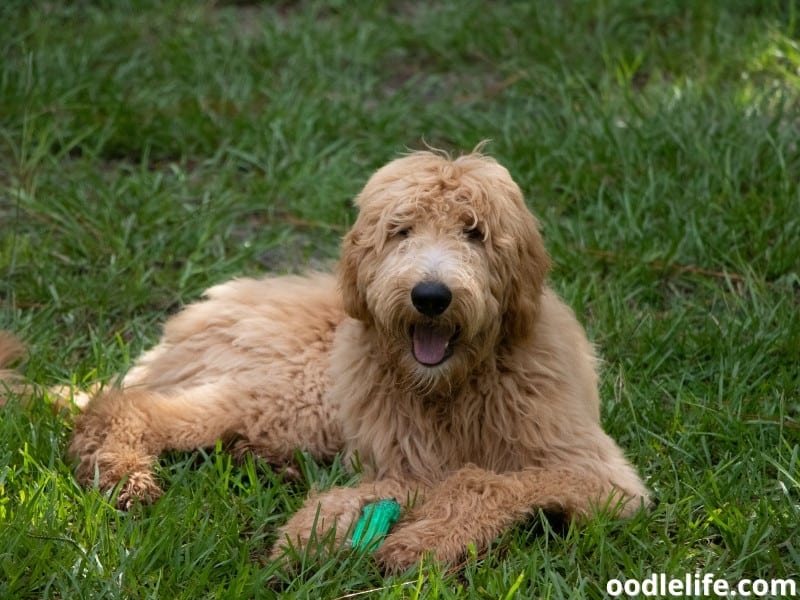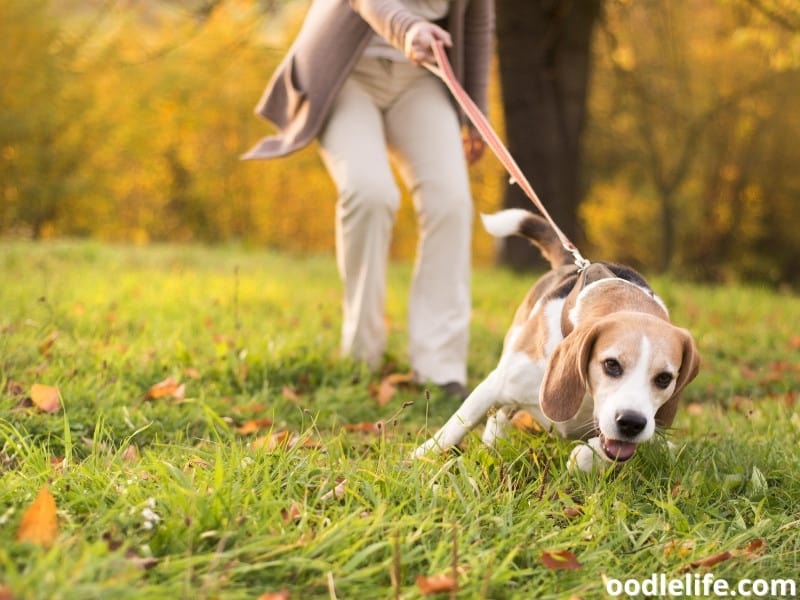Here are a couple of examples of situations where a dog may offer a freeze:
For resources to learn more on ways to provide safe supervision and management of children and dogs go to www.familypaws.com
These are just a few examples; there may be many more. Start observing to see if you can notice any freezing or stillness in different contexts. As discussed below, interpretations such as the above examples should not be attempted without careful observation and consideration of all aspects of the situation.
When I mention stress, this does not necessarily imply negative emotion. I mean stress in the physiological sense. So certain body language signals can mean the dog is feeling some sort of emotional discourse. This discourse could range from positive to negative emotion. Both excitement and fear could have similar effects on the body, with various hormones being released and activating the sympathetic nervous system. The dog may be feeling uncomfortable/fearful or it could also be excited about something. When analyzing stress in body language, it is worth noting the frequency and intensity of the various body language signals. Although in this scenario, when a dog feels the need to display stillness or freezing, the dog is feeling a high level of discomfort and threat.
Why Do Dogs Freeze on Walks?
Dogs freeze on walks for a handful of reasons, including fear, physical weakness, bad behavior, and perhaps the most frustrating—they don’t want to go home. Let’s go through these reasons why dogs freeze on walks and explain the cause of each.
If you just got a puppy or have an old dog, physical weakness may be the reason why your dog freezes on walks. Just like people, dogs don’t have unlimited stores of energy. They need to stop and take a break sometimes.
And that goes double for young or old dogs.
Although puppies may seem like a bundle of energy, they have their limits. Often, when owners take their puppies for a walk, they’ll get tired and lay on the ground, refusing to move. With such little legs, it’s no wonder they get tired quicker.
Older dogs have similar issues. When a dog is nearing the end of its life, it can be tiring or painful to go on long walks. They may freeze, lay on the ground, or refuse to move forward.
These are all signs your older dog is tired and would rather go home.
Sometimes it’s not simply the fact they’re old. In some cases, chronic conditions like arthritis which is more prevalent in older dogs, make it painful to walk. In these cases, your dog is in pain, and you should reduce their physical exertion.
Physical weakness is one of the most common reasons your dog freezes on walks. When your dog is a puppy, a good way to change its behavior is through training. For an older dog, try to go for walks that fit their fitness level. That way, you won’t have to deal with a frozen dog!

Dogs are naturally in tune with their senses, even more than people. If you’ve ever wondered why your dog stopped suddenly in the woods, it’s likely because they sensed something you can’t.
When dogs sense things, they often freeze in place so they can get a better read of their surroundings. You’ll notice this quickly because their ears often perk up and their eyes stare off at a random distance.
Unless you live in an area with high numbers of wild animals, your dog’s sensing something that won’t cause you harm. But it’s still best to help them through their fear instead of rushing them along.
To do this, allow the dog time to monitor its surroundings. A dog that understands its surroundings is much less likely to be afraid. Watch their body language. If they relax, gently coax them along your walk.
If this is a common problem for your dog, bringing treats or a toy may help them move along.

Dogs are willful animals. If you don’t properly train them, they’ll do whatever they want. That’s why you must train your dog to follow your commands when out in public.
If you don’t you’ll have bigger problems than freezing on walks.
Most bad dog behavior presents as hyperactive behavior, such as pulling on the leash, rushing to strangers, or jumping on people. But one sort of bad behavior people don’t talk about much is when they freeze on walks.
Dogs freeze on walks for multiple reasons, some of which are due to their environment. If your dog freezes after passing something smelly and refuses to move, it may want to eat or smell it.
In other cases, dogs freeze because they know what’s coming. If you drive to the veterinarian, your dog may recognize the parking lot and connect it to bad memories. That’s why it’s common for a dog to refuse to get out of your car when going to some places.
The key to preventing such behavior is active training. Most people stop training their dogs when they grow up from the puppy stage. By training your dog into adulthood, you can ensure they have good behaviors when out in public.

Although this is just one example of bad behavior in dogs, it’s the most common and it causes owners the most grief. If you’ve spent any time around dogs, you’ve seen one that absolutely refuses to go home.
People often experience this when going on a walk or to a place their dog enjoys, like the park or beach. You and your dog will have a great time until you have to leave. Then, the dog will either lay down or refuse to move.
A similar problem occurs when you take your dog for a walk. Once you get near your home, you may notice your dog freezes or lays down. In some cases, they lay on their back, making it even harder to move.
Not wanting to go home is a specific type of bad behavior that causes your dog to freeze. Solving this problem is similar to any other bad behavior, and that means consistent training throughout their lives.
If you allow your dog to dictate where and when they go somewhere, they will continue using those tactics to get what they want. By training the dog throughout their life, you can limit these outbursts of bad behavior.
You need to reinforce the training when your dog reaches adulthood. Sometimes this can be as easy as bringing treats along with you to entice your dog to come home. In other cases, you may need to do extensive training before bringing your dog back to such places.

Why does my dog block my path?
Dogs that block your path or refuse to move out of your way when you tell them to get off something are showing dominant behavior. Again, they are showing that they don’t respect you. 7. Will not let anyone including you, the vet, or groomer handle him.
DOGS FROZEN IN TIME FOR 4 MINUTES | The Proof Is Out There (Season 2) | Exclusive
You’re just out with your dog, enjoying a walk, and then SCREECH!… 3 blocks from home, they put on the brakes and refuse to take even one step further. Why? Why does this happen? Here are ten possibilities
It’s often more nuanced and a combination of the above. You’ll likely need some pet detective work to sort this out.Here are ten things you can try to get your dog up and moving again: